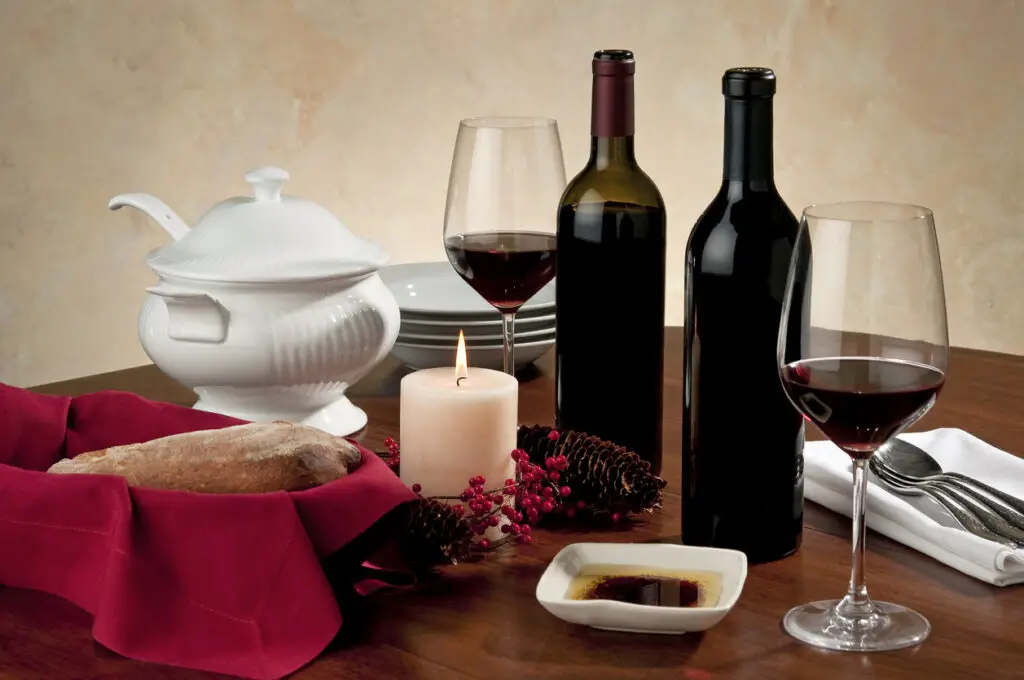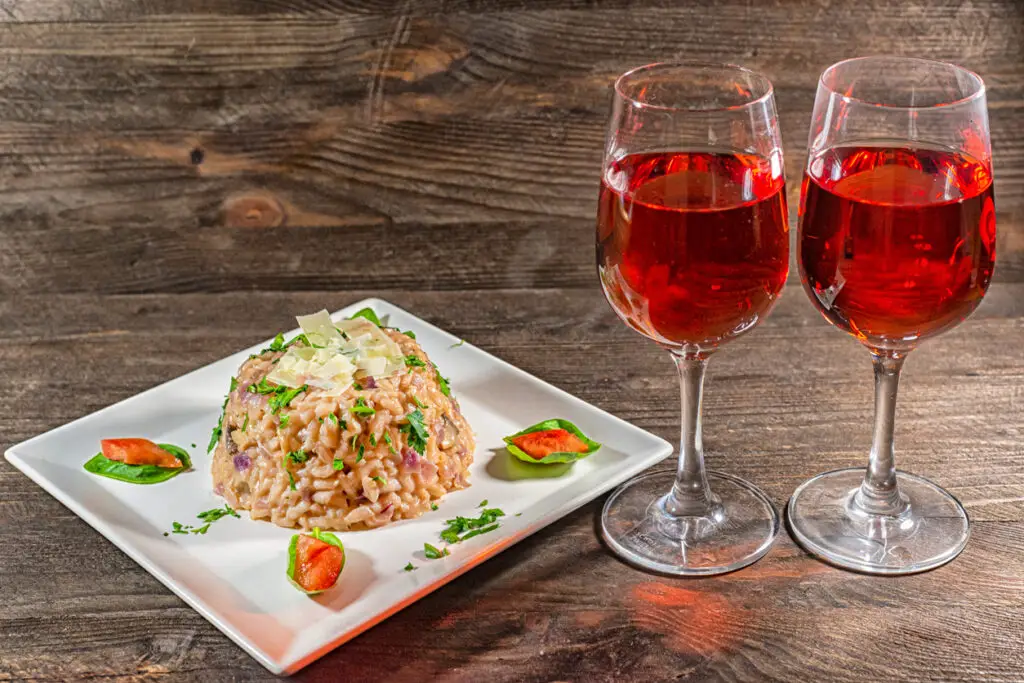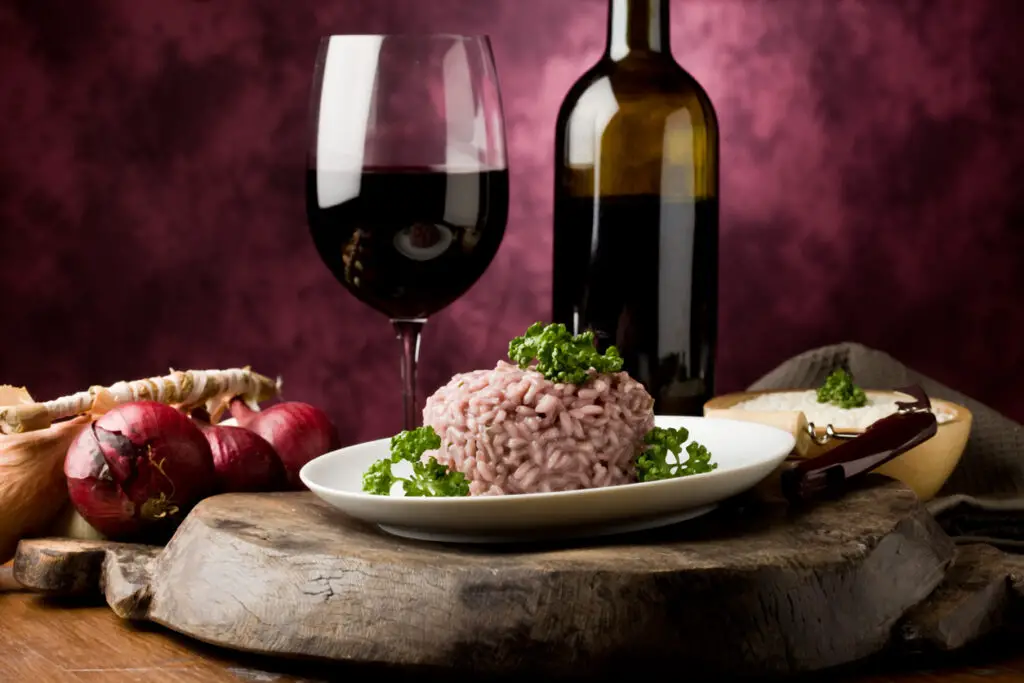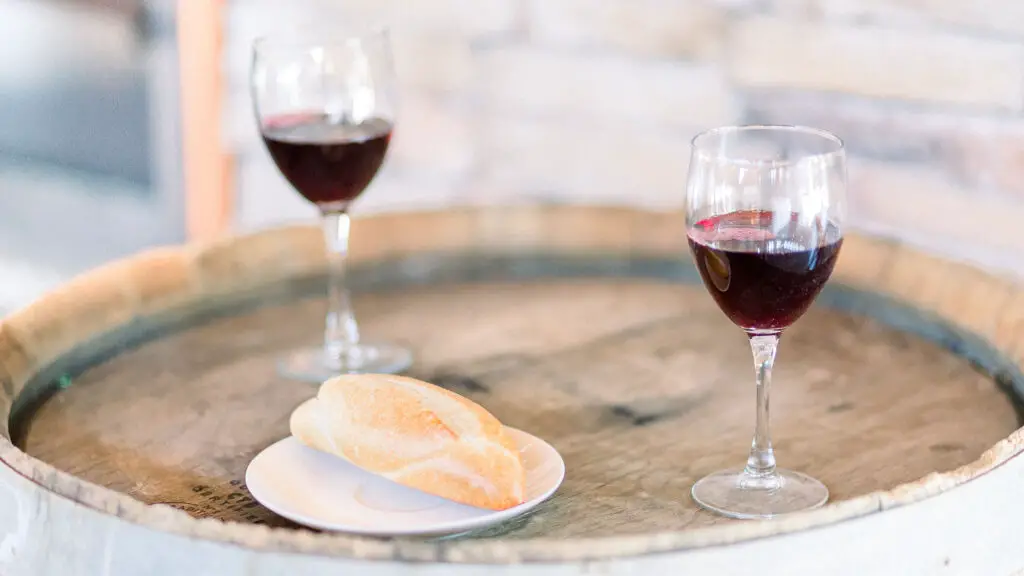Italy is one of the main players in the world’s winemaking industry. Many iconic reds and whites are produced here; among these are Barolo and Amarone. These two are often confused for each other, but they have their slight differences. So what are the main factors in the discussion of Barolo vs Amarone?
Aside from being cultivated and produced in different regions of Italy, these wines also differ in taste. Amarone tastes rich and fruity, with high alcohol and a full body. Barolo is more floral and earthy, with a hint of spices and smoke. It has very firm tannins as well.
Let’s discuss the details of these Italian reds, so you will notice the smaller differences between Barolo vs Amarone yourself.
Frequently Asked Questions
What Wine is Closest to Amarone?
Ripasso is the closest wine to Amarone. Both are dry wines that have a deep cherry flavor. They also share notes of plum and chocolate. There are some places where they differ flavor wise, but they deliver a very similar dark fruit flavor. If you enjoy Amarone, it’s worth giving Ripasso a try. Another perk of Ripasso is that it tends to be on the cheaper side compared to Amarone.
Why is Barolo so Expensive?
The expensive price tag Barolo has is because of the more complicated production process it has compared to other wines. The nebbiolo grapes used to make Barolo are a challenge to grow, and combined with a lengthy oak aging process, Barolo is one of the most prestigious wines Italy has to offer. Furthermore, Barolo isn’t mass produced, making the demand far outweigh the supply.
Why is Amarone so Expensive?
Amarone is expensive because it’s produced with hand-picked grapes and uses the appassimento technique, which dries out the grapes for a more concentrated flavor. This means that a bottle of Amarone requires double the grapes that a more inexpensive bottle of wine would. Additionally, Amarone has a lengthy oak aging process. Since the grapes are harvested by hand rather than machine, harvesters ensure that Amarone gets the highest quality of grapes on the vineyard. Overall, Amarone has a more complex production process and requires high quality grapes, which makes it too limited to cater to demand with a lower price tag.
What Food Pairs Well with Amarone?
Some of the food that pairs well with Amarone includes:
- Strong cheeses like gruyère, parmesan, or a mature cheddar.
- Rich red meat dishes like stew or steak.
- Veal
- Pork
- Dark chocolate with a higher percentage of cocoa.
What is so Special About Barolo Wine?
Barolo is special for its origins, flavor profile, and intensive limited production process. Coming from one of the most famous wine countries, Italy, Barolo is a specially made wine that has been around since the 1800s, and was drunk by Italian nobles, which is how it became known as the “Wine of Kings”. Barolo is best known for its complex flavor profile which hasn’t been effectively replicated anywhere else, thanks to its use of the one-of-a-kind nebbiolo grapes.
Amarone Wine
We’ll start with Amarone when comparing Barolo vs Amarone. Amarone Della Valpolicella is a delicious Italian wine made using partially dried grapes. The main region of these vineyards is Valpolicella, Veneto, Italy. This area consists of the three subregions; Classico, Valpantena, and ‘Est.’
As you can imagine, these regions differ in terroir and weather, so the grapes are distinct as well. That means even though they are all Amarone wines, the slight flavor notes will surely differ.
The Classico Amarones are more luxurious and complex; meanwhile, the bottles from Valpantena are fruity and refreshing. The extended zone or ‘Est’ wines are more complex and richer with a higher alcohol percentage as well.
To produce Amarone wines, the grapes must be dried until the beginning of December at least and then fermented with a minimum of 14% alcohol. The maximum sugar amount in each bottle must range from 12g per liter to about 16g per liter But, this rule isn’t always followed, and the average Amarone bottle contains 5-7g per liter of sugar. Afterward, the wine is aged for two or four years, according to the vintage.
Amarone Grape Varieties

Corvina, Corvinone, and Rondinella are the primary three grapes used to make wine. Corvina is the crowned jewel and contributes most to the flavor. It expresses notes of freshly ground black pepper and smoke, while Corvinone is more on the tobacco side. The latter also has more tannins and deeper color. This is a big factor when comparing Barolo vs Amarone.
Amarone Oak Aging
Author Note: Amarone wine must be aged for at least two years in wood barrels. But, most age for longer, sometimes even up to 9 or 10 years. The barrels used for aging Amarone are usually oak from France or Slovenia, but oak and cherry are sometimes used as well.
Various types of oak contribute to the flavor profile of wines in different ways. Never barrels usually express vibrant and noticeable flavors, while older wood is more subtle and seasoned.
History
Amarone has been around for a long time. It is a very traditional wine and is a staple at any Italian dinner table. But, pairing it with food is a difficult task. It has high alcohol and sugar levels, so it tends to be overwhelming and overshadowing towards food flavors. In the beginning, Amarone was produced as an exclusive wine in fairly low quantities. But, as the demand increased, winemakers started to realize that something must change.
The fermentation process started to change, and Amarone wines became drier. This included modifications to the barrel wood and size. But, some winemakers stayed loyal to the old traditions and continued as they were before. So, the current Amarone flavors also differ according to the vineyard it was made in.
Three Main Styles
As mentioned above, time changed the winemaking process of Amarone wines. This lead to the appearance of three distinct flavor and aroma profiles in production. Here are the versions of Amarone you will typically find in stores.
The simplest and most “dinner-friendly” of the three is classic Amarone. It ages much less in wood, so there isn’t a lot of complexity. This makes it a great match for many food pairings. Any Amarone drunk up to its 10th year of aging falls into this category. One sip and you will notice the beautiful balance and harmony of this wine.
The premium Riserva Amarone is made only in small batches and in exclusive vineyards. Only the finest grapes are harvested and fermented in the best wood. These wines are aged for up to 20 years, even in the bottle. If you love a complex yet easily drinkable wine, this is the one for you.
Last but not least is the more modern version of Amarone is denser, less oxidative, and very rich. This wine is made by using the appassimento method. It ages in small new oak barrels, so you will notice flavor differences very easily.
Appassimento
Appassimento is a method used in winemaking to produce special wines. The grapes are only partially dried out, then slowly pressed and fermented to create what is the delicious Amarone Della Valpolicella.
The different time lengths used for appassimento, the barrels, the time of fermenting, and all other minor details really contribute to the different flavors these wines can take on.
Amarone Food Pairings

Author Note: Amarone wines taste rich, refreshing, and full-bodied. Due to their drying, fermenting, and aging, it can be tricky to match them with the right food as they are so concentrated. But a glass of wine is best with some good food, so here are pairings we recommend.
- Steak, Venison or other juicy red meats
- Game Meats
- Vegetable Stew
- Charcuterie Board with cheeses and meats
- Parmesan or Gorgonzola
- Dark Chocolate
As you can tell, this is a “dinner party” drink. It goes well with many date night dishes, so get cooking! Even if you are just getting together for a bite of dessert, this wine is also great with bittersweet desserts like dark chocolate.
When you are planning a get-together, it is crucial that you plan these pairings beforehand, so you avoid the loss or overpowering of flavors.
Barolo Wine
Next up is Barolo when comparing Barolo vs Amarone. Barolo is another red queen from Italy. It is mainly from the Piedmont region of Italy. Barolo is made of only Nebbiolo grapes, which are very high in acid and tannins, along with having very thin skin. In fact, it is harvested last in October. No other grapes can be used in producing this delicious wine. Barolo wines are usually around 13% in alcohol content.
These wines are full-bodied and rich. Due to the strong presence of Nebbiolo grapes, the tannins and acidity are noticeable too. If you like Pinot Noirs from Burgundy, you will love this wine as well. There are many similarities between these two, such as their vibrant acidity.
Barolo wines have floral hints such as that of roses, along with dried herbs and spices. Most Barolos are aged for at least two years in oak barrels and one additional year in the bottle. The exclusive Riserva wines are aged longer.
The BOCG (Denominazione di Origine Controllata e Garantita) is the most prestigious classification for Italian wines. It guarantees a certain winemaking process and quality. For a Barolo DOCG, a winemaker may only use 100% Nebbiolo grapes that have aged 18 months in wood barrels and 20 additional months externally. Only if wine remains in the barrel for at least five years can it be labeled a Riserva.
Barolo Food Pairings
With thinking of matching Barolo with food, you must consider the age of your wine. A younger wine will have stronger tannins and fruity flavors like cherries, plums, strawberries, and peaches. Older wines will have more subtle flavors coming out, such as hints of tar, tobacco, roses, and black fruits. Similar foods pair well with Barolo vs Amarone.
A good basic combination with Barolo is a salad. Add some strong cheese shavings and slices of the juicy steak to make a richer flavor. A meat and vegetable salad is a great side dish for your wine and dinner party.
Spicy foods are a big no-no since the alcohol content of Barolo is very high. Instead, go for the rich sauces and fatty foods—the fattier, the better, especially with a high alcohol content wine.
Barolo Wine and Asian Food
Moderately spicy Asian dishes are high in tannins, so they are perfect for Barolo wine with its tannins. This combination will bring out the subtle flavors of each other. The fruity flavors of a young Barolo are perfect with a complex and multilayered Asian dish.
Barolo Wine and Chocolate

Author Note: Pairing sweet foods with higher alcohol wine is a rule as old as time. So pairing a Barolo wine with some dark chocolate only makes sense. Many people (we included) swear by this mouth-watering combination—the bitterness of the chocolate balances out the tannins in our Barolo wine.
Dryness in wine is perfect for smoothing out the sweetness of chocolate, so these two really create a delicious balance and harmony together.
Other Barolo Food Pairing Ideas
- Game meat such as pigeon and wild duck
- Roast goose
- Steak tartarMushroom or cheese risotto
- Roasted hazelnuts as a snack
- Pork sausages
- A grilled fillet steak
- Brasato al Barolo (braised veal or lamb)
- Strong cheeses like Gorgonzola piccante, Castelmagno
- Mild cheeses like Robiola, Grana Padano
Conclusion
As you can see, Barolo and Amarone are very distinct wines. The grapes are grown differently, fermented, and aged differently as well. These processes create unique flavors that can’t be mistaken for one another.
The terroir and weather of the vineyards also contribute to these major differences in flavor and aroma profiles. Next time you are at the store, keep our tips in mind. Pick up a bottle of either Barolo or Amarone for your dinner party. Then, plan your dishes accordingly and enjoy your evening.
We hope you enjoyed this article on Barolo vs Amarone.
To living a full-bodied life,
Wesley

